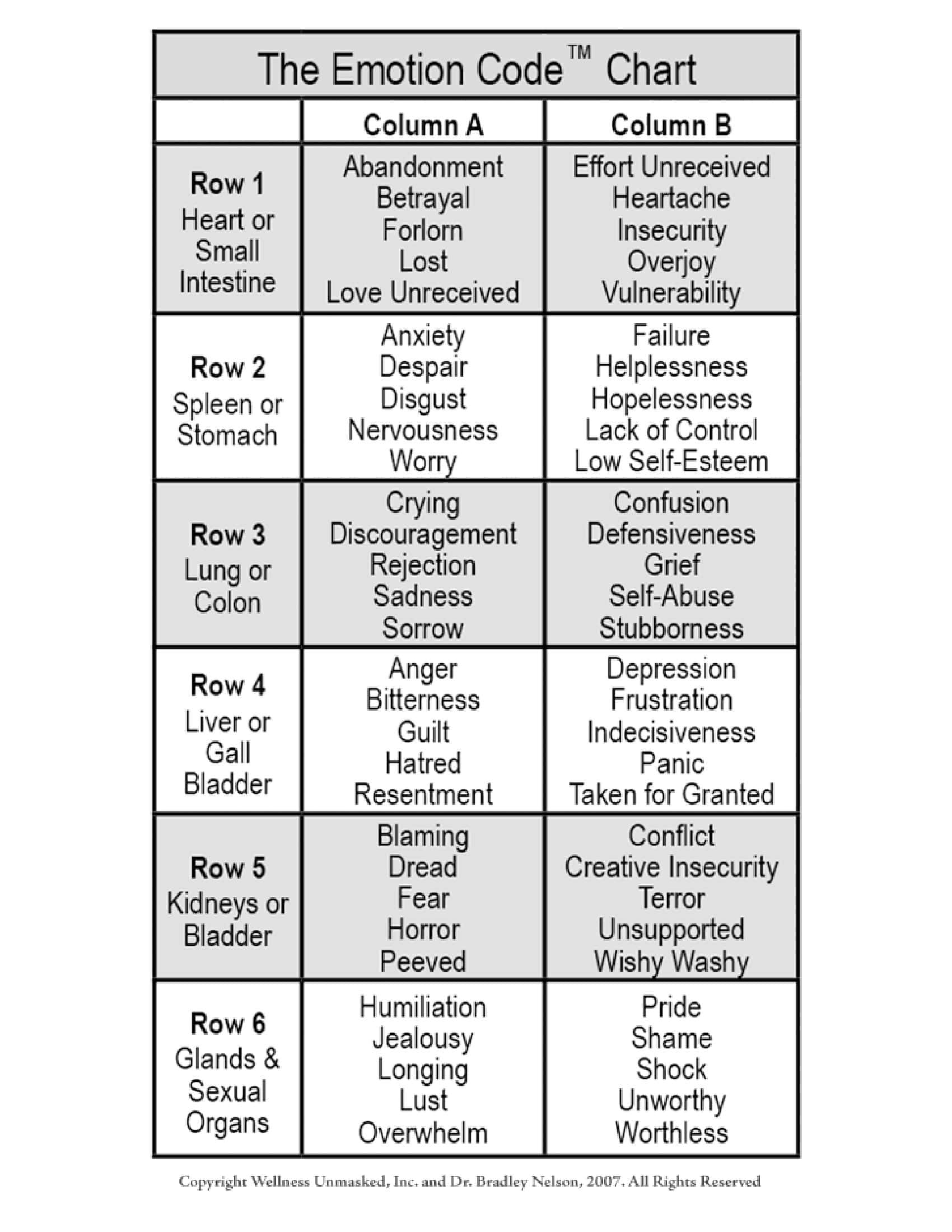It’s not always easy to put a day’s ups and downs into words. Most of the time we just say “I feel bad”. The Emotion Code Chart reduces this ambiguity by giving you a clear framework. It lets you see the trigger, bodily sensation, intensity, and duration on the same page. That clarity makes emotional patterns visible in coaching conversations, personal journals, and mindfulness practices and makes recurring themes easy to spot. TypeCalendar offers printable Emotion Code Charts that meet this need, providing an intuitive, organized tracking experience.
Table of Contents
23+ Printable Emotion Code Charts — TypeCalendar Collection

You’ll find more than 23+ Emotion Code Chart templates on TypeCalendar. The ”Emotion Mapping Matrix” pages allow you to record emotions with the category trigger bodily sensation‑intensity (0-10) flow. “Session Log” layouts provide date, focus theme and short observation note fields for sessions conducted with a coach/therapist. For those who want to see emotion patterns weekly, the “Weekly Heat‑Map” templates show the intensity by color blocks according to the days; the “Trigger → Response → Reframe” models help you reframe the same event with a different thought.
Emotion Code Chart Printable
How to Use: From Daily Journal to Session Records
When you open the Emotion Code Chart, first fill in the event/context line (e.g. “Presentation before the meeting”). Then note the emotion and bodily sensation (e.g., chest tightness, a knot in the stomach, shoulder tension). Give a value between 0–10 in the intensity field; plan a new framing or regulatory step (breathing exercise, short walk, note-taking) in the last column of the same row. At the end of the week, seeing how many times the same trigger is repeated on the “Weekly Heat‑Map” page makes environmental adjustments for the following week (changing the meeting time, moving the breaks forward) more concrete. In coaching or mentoring environments, the “Session Log” page provides a regular record of progress, with the goal and brief outcomes of each session.
File Formats: One Template, Multiple Channels From Notebook to Cloud
The TypeCalendar team prepared the Emotion Code Charts with a single template multiple channel approach. The ready-to-print PDF version is 300 dpi quality and compatible with both A4 and US Letter sizes; the lines stay sharp when you press with “Actual Size”, the ink does not disperse when filling with a pen.In Word (.docx), the table structure is locked but text fields are editable; you can add titles, place your organization’s logo, or adapt the language to your terminology. Google Docs copies allow real‑time editing in coach-client or team collaboration; a trace of all sessions remains in the shared folder. Full vector SVG templates can be instantly recolorized to your color palette in Illustrator/Canva, and won’t pixelate when scaled up for a wall poster or training presentation.
Page Layouts for Different Scenarios
- Emotion Mapping Matrix (Daily): Trigger‑emotion‑physiological symptom‑intensity‑reframing flow at a glance.
- Weekly Heat‑Map: Intensity color codes on the day / time period axis; weekend feedback note area.
- Trigger Journal: The “Before – Moment – After” triple box is ideal for catching automatic thoughts and writing alternative beliefs.
- Session Log (Guided): Session goal, brief exercise, and homework lines, with progress notes on the same page.
- Mood + Habit Combo: Combines emotion tracking with short habit boxes (such as sleep, water, movement).
Download and Start Mapping Your Emotions
If you want to make your emotions more visible and recurring triggers more clear, the TypeCalendar Emotion Code Chart Printable & Template collection is for you. Choose from 23+ templates to suit your needs, print PDF or edit Docs/SVG versions – start your daily practice today. As your emotional map becomes clearer, you’ll find that small adjustments throughout the day lead to significant relief.























![Free Printable Morse Code Charts [Numbers, Alphabet] 1 Morse Code Chart](https://www.typecalendar.com/wp-content/uploads/2023/09/Morse-Code-Chart-150x150.jpg)
![Free Printable Pie Chart Templates [Excel, PDF, Word] Maker 2 Pie Chart](https://www.typecalendar.com/wp-content/uploads/2023/06/Pie-Chart-150x150.jpg 150w, https://www.typecalendar.com/wp-content/uploads/2023/06/Pie-Chart-1200x1200.jpg 1200w)
![Free Printable Reward Chart Templates [Word, PDF] Teachers 3 Reward Chart](https://www.typecalendar.com/wp-content/uploads/2023/03/Reward-Chart-150x150.jpg 150w, https://www.typecalendar.com/wp-content/uploads/2023/03/Reward-Chart-1200x1200.jpg 1200w)
